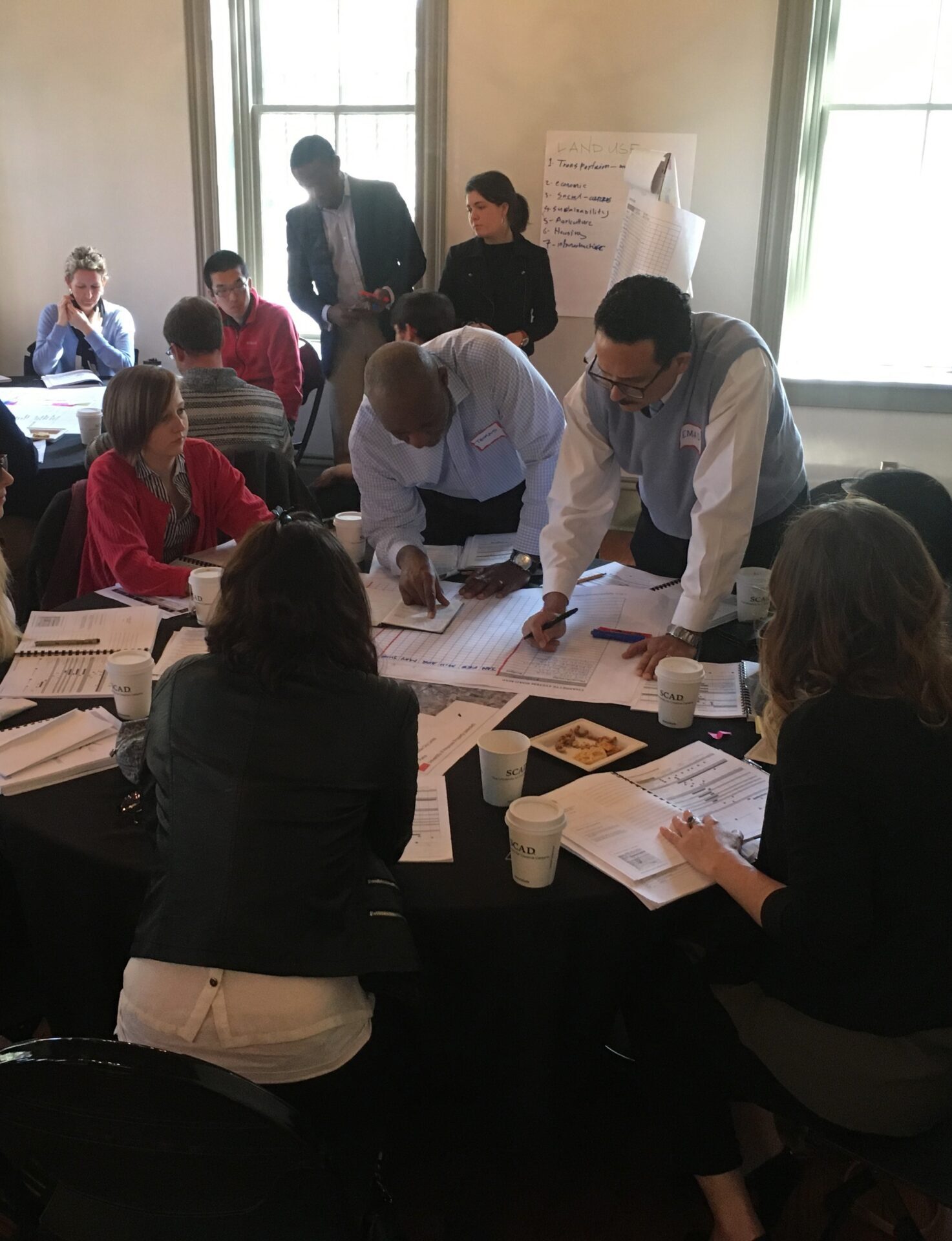Consulting services for community planning, urban design, and collaborative problem solving.
Meaningful and cost-effective community engagement.
Convening conversations that matter for building consensus and resolving conflicts.
Charrette preparation, facilitation and documentation.
Designing the right process for the project and documenting results.
Community education for design-centered planning.
Preparing citizens, professionals and public officials for informed participation.
Community action research .
Developing local knowledge and shared understanding of problems and possibilities
Facilitation.
One of the keys to building consensus is convening focused conversations that develop shared understanding and build relationships of trust, both within a core planning team and among community stakeholders. Although a good facilitator doesn’t necessarily need to be an expert in design and planning, facilitation of a process where professional experts have to engage citizens literally “where they live” can benefit from a facilitator’s ability to understand the technical issues, to serve as a translator, and to encourage specialists to listen to citizen concerns without reducing immediately reducing them to conventional solutions.
Documentation
What happens after the charrette? A successful public process should transition into effective implementation. Each step toward the implementation of a plan should bear a clear relationship to the goals and common understandings emerging during the charrette. What does it take to sustain momentum and commitment to implementation? Clear and accurate documentation of the conversations that take place contribute to transparency, accountability, and the capacity to follow through after a successful charrette.
Community Research
Effective public engagement depends on deep understanding of place and community, and the ability to take advantage of local knowledge. In addition to understanding existing physical conditions, demographic trends, and the field of active stakeholders, efficacy of a planning project can depend on the ability to understand the organizational and institutional assets (formal and informal) that comprise a community’s capacity for building consensus and act on a shared vision. Community research includes place-based observation and analysis, stakeholder interviews, focus groups, organizational and institutional asset mapping.
Training for design-centered collaboration.
Planning professionals, public officials, and citizens often have a limited understanding of the potential benefits and challenges associated with design-centered and vision-based tools such as the charrette. Planning officials often rely on outside consultants for planning and urban design, but may find that an expensive process leaves them with a document that they are not well-prepared to explain, much less implement. We’ve found that training in charrette preparation can help public agencies be more informed clients for consultants, to use expensive consultant time more efficiently, and even take on some of the most important elements of public engagement and pre-charrette preparation in-house.

